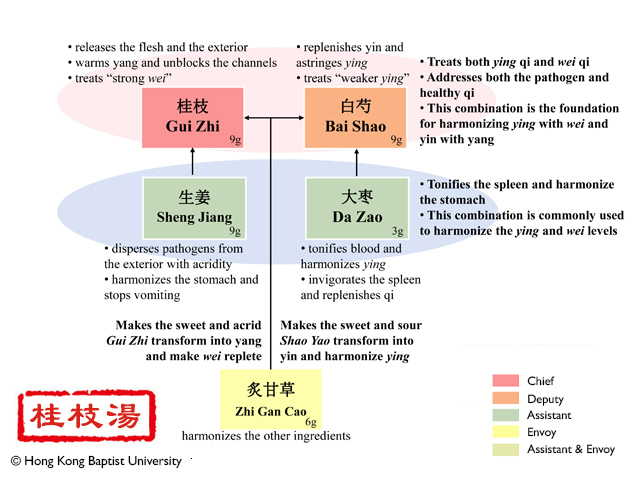
| Chief | Gui Zhi |
| Addresses both the pathogen and healthy qi. This combination is the foundation for harmonizing ying with wei and yin with yang. |
| Deputy | Shao Yao |
| Addresses both the pathogen and healthy qi. This combination is the foundation for harmonizing ying with wei and yin with yang. |
| Assistant | Sheng Jiang |
| This combination is commonly used to harmonize the ying and wei levels. |
| Assistant | Da Zao |
| This combination is commonly used to harmonize the ying and wei levels. |
| Envoy | Gan Cao |
| Makes the sweet and acrid gui zhi transform into yang and make wei replete. Makes the sweet and sour shao yao transform into yin and harmonize ying. |